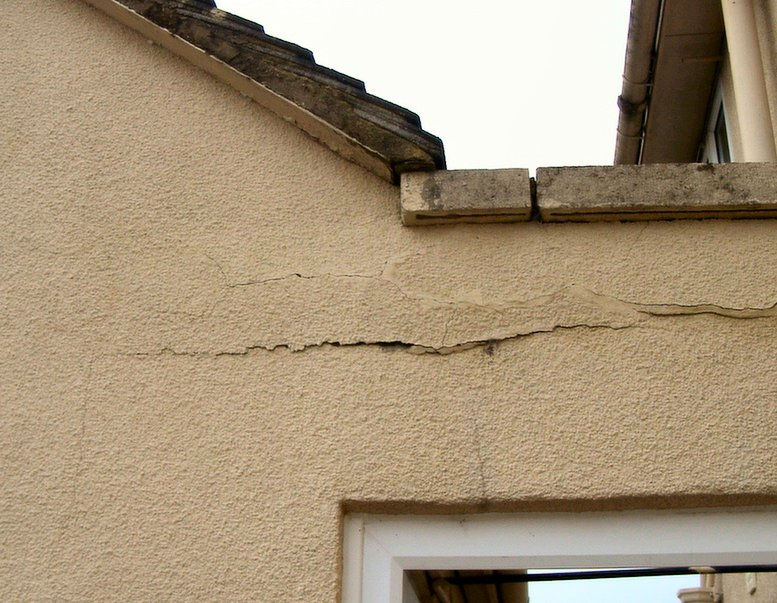Cracking in buildings BR 292
BRE Group (BRE) is a world-leading centre of built environment expertise, research and training, and includes a third-party approvals organisation offering certification of products and services to international markets.
The first edition of the BRE guide Cracking in buildings was published in 1996. The second edition, written by Ron Bonshor, Lesley Bonshor and Roger Sadgrove, was published in March 2016. Its aimed at all who own, occupy, design, build and maintain buildings.
Buildings and other built structures are moving all the time, but usually these movements are so small as to be unnoticeable. However, if a structure is unable to accommodate movement, cracking is likely to occur. The appearance of cracks can be visually unattractive and disconcerting for occupants, and if left untreated can affect the integrity, safety and stability of the structure.
The BRE guide describes the basic materials science behind the subject and explains how and why cracks occur. It provides a source of relevant information and provides a systematic approach for the reader to follow.
The first part looks at the causes of and mechanisms behind cracking, and the use of joints as safeguards against cracking. The second part examines the application of the science, and how cracking is effected by temperature, moisture, chemical and foundation movement. Appendices cover the classification of visible damage to walls, and provide a suggested approach to crack investigation.
This second edition updates references and aspects of the methodology that have changed since the first edition.
You can view a sample of, and purchase the book here.
[edit] Related articles on Designing Buildings Wiki
- BRE articles on Designing Buildings Wiki.
- BRE Buzz.
- BRE Trust.
- Burland scale.
- Cracking and building movement.
- Defective Concrete Blocks Grant Scheme.
- Defects in brickwork.
- Defects in construction.
- Defects in stonework.
- Efflorescence.
- Foundations.
- Ground heave.
- Home quality mark.
- Latent defects.
- Pyrite and mica redress issues in Dail Eireann.
- Reversible and irreversible expansion.
- Settlement.
- Thermal expansion.
- The history of fabric structures.
- Why do buildings crack? (DG 361).
[edit] External references
Featured articles and news
International Electrician Day, 10 June 2025
Celebrating the role of electrical engineers from André-Marie Amperè, today and for the future.
New guide for clients launched at Houses of Parliament
'There has never been a more important time for clients to step up and ...ask the right questions'
The impact of recycled slate tiles
Innovation across the decades.
EPC changes for existing buildings
Changes and their context as the new RdSAP methodology comes into use from 15 June.
Skills England publishes Sector skills needs assessments
Priority areas relating to the built environment highlighted and described in brief.
BSRIA HVAC Market Watch - May 2025 Edition
Heat Pump Market Outlook: Policy, Performance & Refrigerant Trends for 2025–2028.
Committing to EDI in construction with CIOB
Built Environment professional bodies deepen commitment to EDI with two new signatories: CIAT and CICES.
Government Grenfell progress report at a glance
Line by line recomendation overview, with links to more details.
An engaging and lively review of his professional life.
Sustainable heating for listed buildings
A problem that needs to be approached intelligently.
50th Golden anniversary ECA Edmundson apprentice award
Deadline for entries has been extended to Friday 27 June, so don't miss out!
CIAT at the London Festival of Architecture
Designing for Everyone: Breaking Barriers in Inclusive Architecture.
Mixed reactions to apprenticeship and skills reform 2025
A 'welcome shift' for some and a 'backwards step' for others.
Licensing construction in the UK
As the latest report and proposal to licence builders reaches Parliament.
Building Safety Alliance golden thread guidance
Extensive excel checklist of information with guidance document freely accessible.
Fair Payment Code and other payment initiatives
For fair and late payments, need to work together to add value.
Pre-planning delivery programmes and delay penalties
Proposed for housebuilders in government reform: Speeding Up Build Out.
High street health: converting a building for healthcare uses
The benefits of health centres acting as new anchor sites in the high street.


























